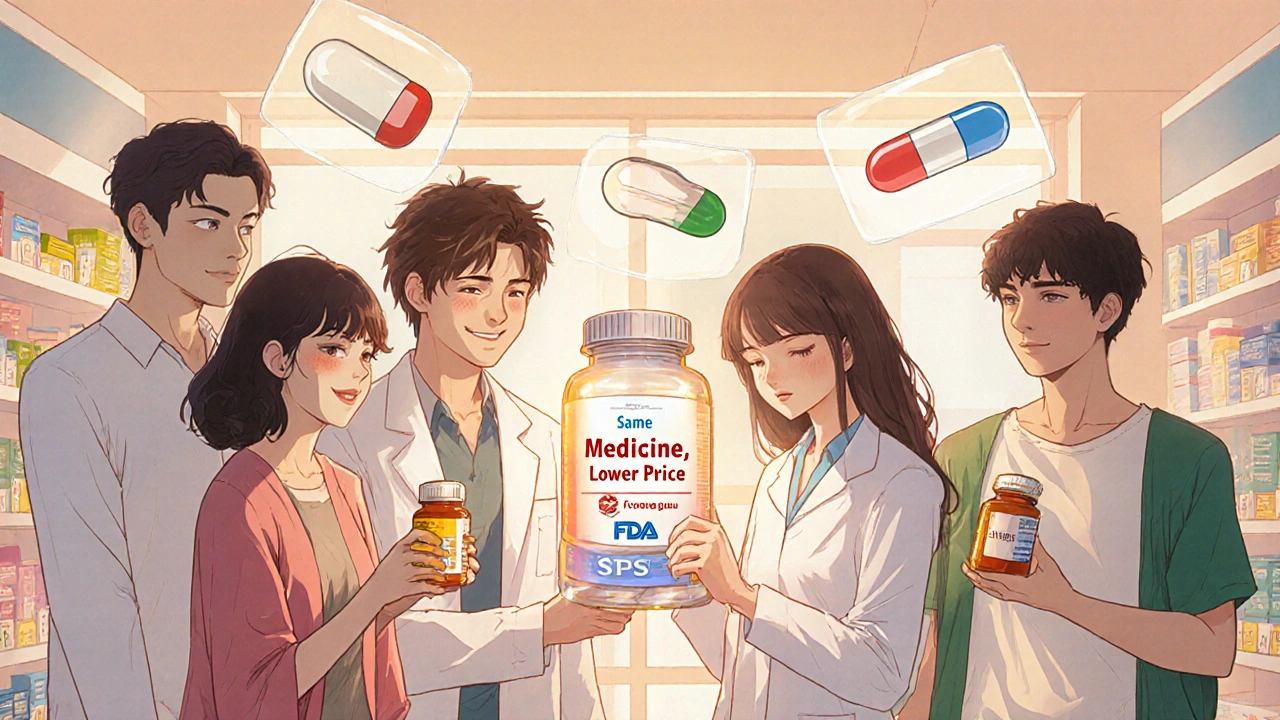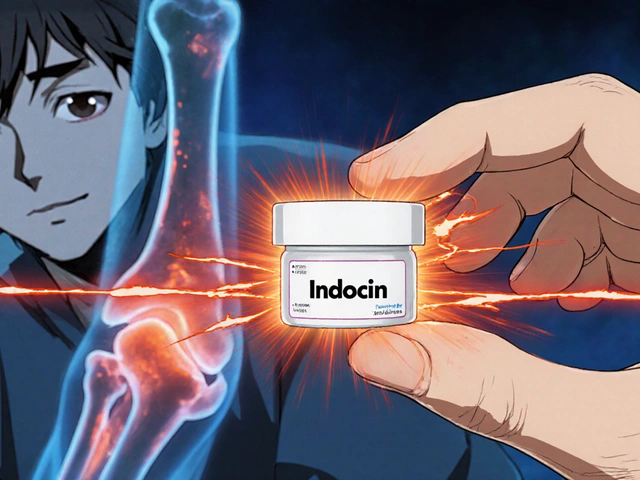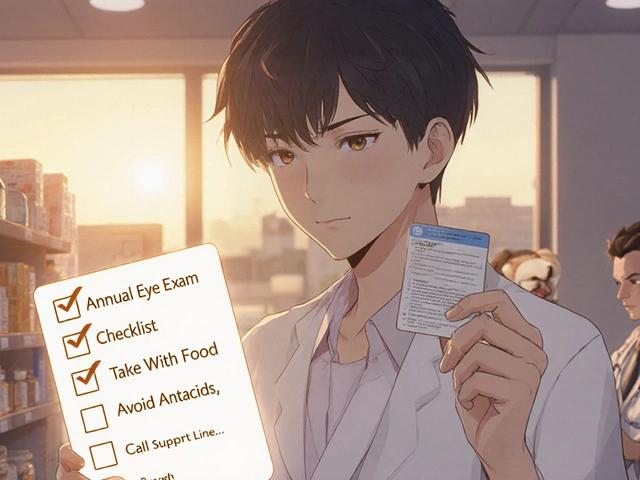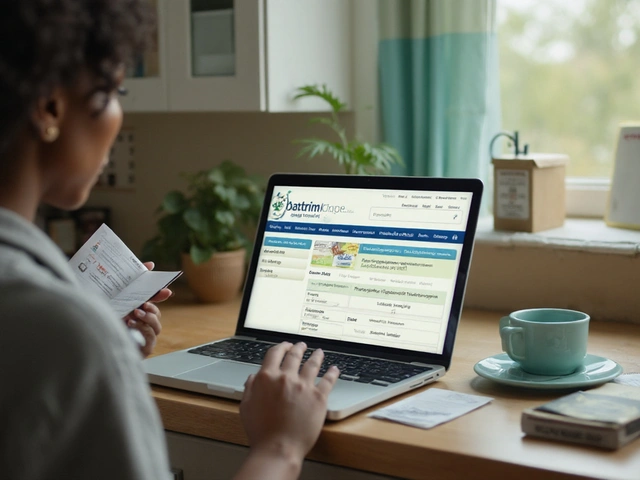Every year, millions of people in the U.S. switch from brand-name medications to generics to save money. But many still hesitate-not because of cost, but because they don’t trust them. Generic drugs are not cheaper because they’re weaker. They’re cheaper because they don’t carry the marketing costs of a big-name brand. Yet, confusion persists. Why? Because the language used to explain them is often written for doctors, not patients.
What Exactly Is a Generic Drug?
A generic drug is the exact same medicine as the brand-name version, just without the flashy packaging or trademarked name. The FDA requires that generics contain the same active ingredient, in the same strength, and work the same way in your body. If you take 20 mg of esomeprazole (the generic for Nexium), it does the same thing as 20 mg of Nexium. Same chemistry. Same effect. Same safety profile. The only differences? Color, shape, or the inactive ingredients-like fillers or dyes. These don’t affect how the drug works. Think of it like buying store-brand cereal instead of Kellogg’s. Same oats, same sugar, same nutrition. Just a different box. In 2022, 90.9% of all prescriptions filled in the U.S. were for generic drugs. That’s over 6 billion prescriptions. And yet, nearly 4 out of 10 Americans still think generics are less effective. That’s not based on science. It’s based on misunderstanding.Why Do People Doubt Generics?
The biggest myth? That generics aren’t held to the same standards. They are. The FDA doesn’t approve a generic unless it proves it delivers the same amount of medicine into your bloodstream as the brand. The rule? Between 80% and 125% of the brand’s blood concentration. That’s not a wide range-it’s a tight, scientifically proven window. But here’s where things get messy. Some people notice subtle differences. Maybe their headache relief feels slower. Or their thyroid medication doesn’t seem to work as well. These aren’t always imagined. For certain drugs-like warfarin, levothyroxine, or phenytoin-tiny changes in how the body absorbs the drug can matter. These are called narrow therapeutic index drugs. For these, even small variations can cause problems. That’s why experts don’t say all generics are identical. They say they’re bioequivalent. And that’s different. Bioequivalent means they work the same for most people. But for a small group, consistency matters. That’s why your doctor might recommend sticking with one brand of levothyroxine-even if it’s generic-because switching between manufacturers can sometimes cause fluctuations.How Language Guides Fix the Problem
The solution isn’t more pamphlets. It’s better language. That’s where consumer language guides come in. These aren’t legal documents or scientific papers. They’re plain-English tools designed for people who don’t have a medical degree. Take the FDA’s Generic Drug Facts page. It doesn’t say “bioequivalence.” It says: “Generics must work the same as brand-name drugs to get FDA approval.” It uses analogies: “Tylenol is to acetaminophen as Kleenex is to tissues.” It shows side-by-side images of pill bottles. It even explains why generics look different: “The shape and color don’t change how the medicine works.” A 2021 study found that patients who read these simplified guides understood generic drugs 37% better than those who got standard medication leaflets. And it wasn’t just comprehension-it changed behavior. When patients understood the science, they were 22% more likely to stick with their generic prescription. Pharmacies like CVS, Walgreens, and Walmart now train their staff to use a 90-second script: “Same active ingredient. Same effect. Same safety. Just cheaper.” That’s it. No jargon. No fluff.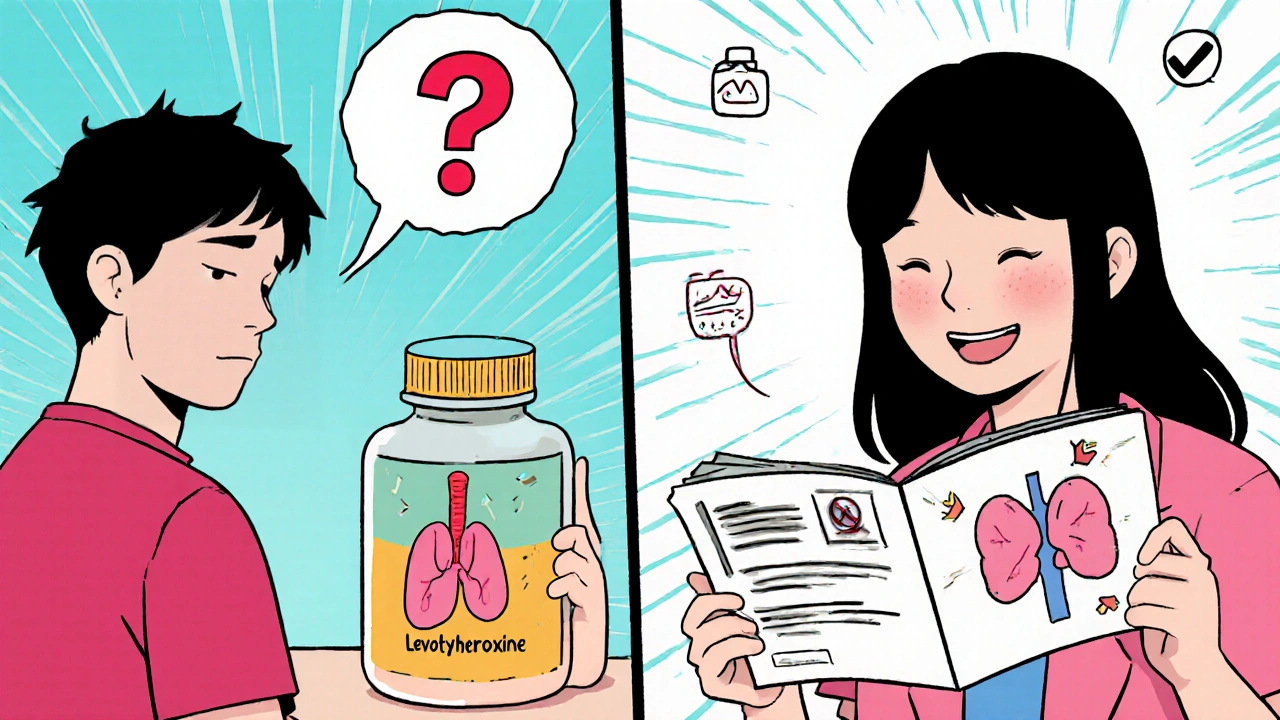
What’s Missing From Most Guides?
Not all guides are created equal. Some pharmacy chains use generic templates with vague language like “generics are just as good.” That’s not enough. Patients need nuance. For example, most guides don’t mention authorized generics. These are brand-name drugs sold under a generic label-same factory, same formula, same packaging, just no brand name on the bottle. They’re often cheaper than the brand but identical in every way. And studies show patients who switch to authorized generics are 28% less likely to go back to the brand. Also missing? Clear warnings for high-risk drugs. If you’re on levothyroxine, you need to know: “Stick with one manufacturer.” If you’re on phenytoin, you need to know: “If you feel more seizures, tell your doctor right away.” These aren’t edge cases. They’re real risks that need clear, specific guidance. The FDA’s 2023 initiative is starting to fix this. They’re now creating medication-specific guides for drugs like warfarin, digoxin, and cyclosporine. These aren’t one-size-fits-all. They’re tailored. And they’re long overdue.What Patients Are Saying
On Reddit’s r/pharmacy, users shared stories. One woman switched from brand-name Lipitor to atorvastatin and saved $300 a month. She felt the same. No side effects. No difference. Another man switched his thyroid med and noticed his energy dropped. He went back to his original brand-and felt better. His doctor didn’t know why. Turns out, he’d switched manufacturers twice in six months. That’s the problem. No one told him to stay consistent. A 2021 University of Michigan study tracked 450 people on generic levothyroxine. Forty-one percent stopped taking it within six months because they thought it wasn’t working. But when researchers checked their labs, most were within normal range. The issue wasn’t the drug. It was the fear. That’s why the best guides don’t just inform-they reassure. They say: “It’s normal to feel unsure. Here’s what science says. Here’s when to call your doctor.”
What’s Changing in 2025?
By January 2025, all Medicare Part D plans must give patients generic education materials that meet NIH health literacy standards. That means no more 12-point font, no more passive voice, no more “should be taken.” It’s now: “Take this pill every morning.” Pharmacy benefit managers like CVS Caremark and OptumRx are adopting the FDA’s template. AI tools are being tested at Kaiser Permanente to personalize explanations based on your literacy level and medication history. By 2026, your electronic health record might pop up a simple message when your doctor prescribes a generic: “This is the same as the brand, but costs $40 less. Want to see how it works?” The goal isn’t to push generics. It’s to give people the truth so they can choose.What You Can Do Today
If you’re on a generic drug and you’re unsure:- Ask your pharmacist: “Is this the same as the brand?” They’ll show you the FDA-approved facts.
- Check the FDA’s Generic Drugs webpage. It’s updated quarterly and free.
- For thyroid, seizure, or blood thinner meds, ask: “Should I stick with one brand?”
- Don’t switch manufacturers unless your doctor says it’s safe.
- If you feel different after switching, write it down. Bring it to your next visit.
Are generic drugs really as effective as brand-name drugs?
Yes, for most medications. The FDA requires generics to have the same active ingredient, strength, and dosage form as the brand. They must deliver the same amount of medicine into your bloodstream-within 80% to 125% of the brand’s level. This is called bioequivalence. Over 98% of approved generics meet this standard. For most people, generics work just as well.
Why do generic pills look different from brand-name pills?
By law, generic drugs can’t look exactly like the brand-name version. That’s to avoid trademark infringement. So they may be a different color, shape, or size. But those changes only affect appearance, not how the drug works. The active ingredient-and how your body absorbs it-is identical. Think of it like buying a different brand of aspirin: different logo, same pain relief.
Can switching between generic manufacturers cause problems?
For most drugs, no. But for medications with a narrow therapeutic index-like levothyroxine, warfarin, or phenytoin-even small changes in how the body absorbs the drug can matter. If you’re on one of these, it’s safest to stick with the same manufacturer. Talk to your doctor or pharmacist about whether you should avoid switching.
What’s an authorized generic?
An authorized generic is the exact same drug as the brand-name version, made by the same company, in the same factory-but sold without the brand name. It’s not a copy. It’s the real thing, just cheaper. These have the lowest switch-back rates because they’re identical in every way, including inactive ingredients.
Why do some people say their generic medication doesn’t work?
Sometimes, it’s the placebo effect-or a change in manufacturer. Other times, it’s a real issue with a narrow therapeutic index drug. If you feel different after switching, track your symptoms and talk to your doctor. Don’t assume the drug failed. But don’t ignore your body either. The key is consistency: if your medication works, stick with the same version.

